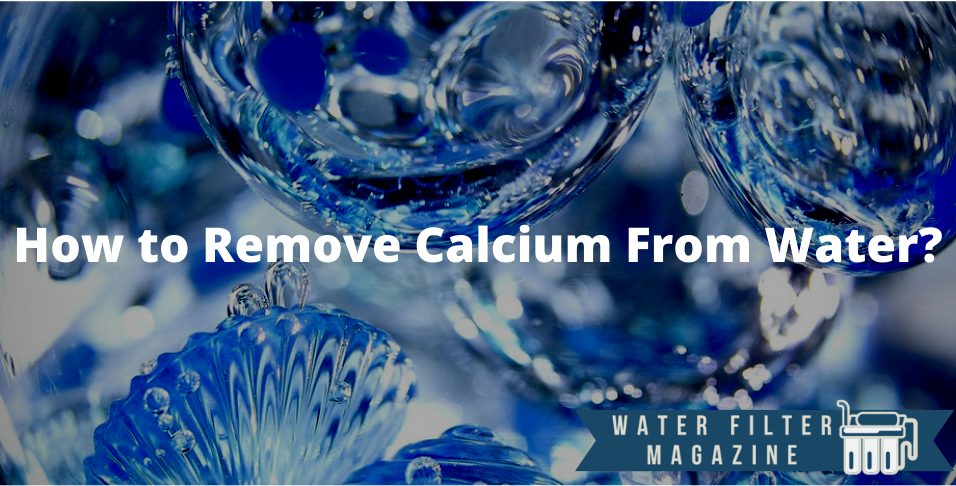When dwelling on water hardness the first and usual suspect is calcium. Yet, this is just a statement too simple to describe all the possible effects of calcium on other compounds or human health. It dissolves from rocks, like limestone, marble, fluorite, and others and so occurring naturally in the water giving it a better taste. Being an important pH stabilizer due to its buffering qualities it is a valuable element for balance in nature. Copper, lead, and zinc would be highly toxic in soft water if it wasn’t for calcium to negatively influence their toxicity. At room temperature calcium forming calcium hydroxide which dissolves in water as soda and hydrogen gas. When carbon dioxide is present however it causes erosion.
When it concerns human health, calcium is the most abundant mineral in the human body and is one of the most important supporting substances. Supplementing bone and tooth growth amongst many others, it is a must-have on a daily basis, for the human body to function in good health.
Drinking hard water is considered healthier for the human system because of natural minerals like calcium and magnesium. It sounds as easy as pouring yourself a glass of water from the tap and drinking but it is much more complicated. Along with these natural minerals, many other compounds and elements come to your tap and they are most definitely not healthy. On the opposite, not only are they not healthy for you to drink but they also ruin your appliances, make your towels feel like a scrub, and your hair frizzy. Thus, comes the need to soften water for washing and protecting the washing machine or the water heater, which are very susceptible to the effects of the water solids.
If you want to supply your entire house with calcium-free water, there are a few ways of removing calcium from water, one of which is using a water softener. A water softener is a device that filters the hard and heavier materials from the water leaving the softened water to flow into the plumbing. It removes high concentrations of hard materials like calcium and magnesium, but it doesn’t eliminate them entirely. You will need space to install it and changing the filters in due time is extremely important.
Should You Get a Pro RO System to Remove Calcium From Water?
Another way is through a reverse osmosis system. Such a system removes chlorine, sediment, and dissolves solids, like calcium and magnesium that are the main cause of hard water. It is a costly but very efficient and quality filtration system. The reverse osmosis system will also require space in it is a single installation, so you will have to install it in the kitchen, in the bathroom, or anywhere else you may want.
When you don’t need big quantities of water cleared of calcium and you are looking for a cheaper method you can use the simplest one there is – boiling. When you boil the water, the minerals are separated, and residual calcium, along with impurities will settle at the bottom of the container you have boiled in. The downside is that this method is not effective on a large scale, but the upsides are quite a few. You don’t need any installation and no chemicals are used. The water is safe for consumption and will serve other purposes like softening towels. The only cost would be the energy consumption and effort.
Not Everything Has to Be Expensive When We Want to Remove Calcium From Water
 Looking for a quick solution to washing your hair with soft water you can add some lemon juice to it. It will lower the levels of hardness and acidity and your hair will become shiny and frizz-free.
Looking for a quick solution to washing your hair with soft water you can add some lemon juice to it. It will lower the levels of hardness and acidity and your hair will become shiny and frizz-free.
If an effort is not a price you want to pay then there is a balanced solution which decreases the effort, most importantly – does the job, and is of moderate expense. Activated carbon filters are easy to install almost anywhere and are highly effective against contaminations, water solids, irons, and particles. You can install it on the kitchen tap or under the sink. On the shower as well. There are water bottles with activated carbon filters installed in them.
These filters don’t take much space and they are being developed to become longer-lasting than before, so that decreases the necessity of changing them often, hence decreasing their long-term cost. However, if you do decide on using activated carbon filters you must take care to always change the filter in due time. A dirty filter is worse than no filter!
There are also ion-exchange filters that can be attached to the kitchen faucet. It exchanges the ions of minerals and so giving a better taste to water, but the result depends on the specific content of your water. A setback for these filters is that they don’t remove all contaminants.
One more way of removing calcium from water is by using vinegar. Since calcium is highly reactive to acids it will dissolve within an hour.
We have answered more questions in our other articles such as what to do with an old water heater and have more top products in our guides like UV filtration system reviews.

